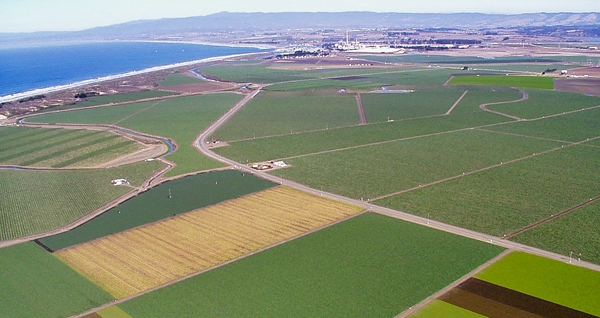Sedimentation is a common water quality problem in California. So, it's a big deal that a new study indicates that changes in irrigation technology might help. Researchers have found that large-scale adoption of drip irrigation techniques likely played a considerable role in reducing suspended river sediments in one of the state's largest agricultural areas.
“Widespread conversion from furrow irrigation to less erosive drip techniques in the early 1990's seems to be helping decrease suspended sediment concentrations in Salinas River watershed,” says Andrew Gray of the University of California, Riverside, who led the study.
In arid to semi-arid climates, like those that exist across much of California, river sediments are a product of large-scale hydrologic and climate factors like wildfires and flooding. At the same time, human activities like urbanization and agriculture also contribute. Upstream dams can lead to sediment impoundment, and lowland agricultural practices can intensify sedimentation through erosion. Gray says that means “changes in agriculture can have big ramifications for river sediments in those watersheds, with further implications for people and ecosystems.”
Given the nature of the work, much of the research is what Gray refers to as “forensic” – meaning that he and his colleagues work backwards to look for underlying causes that can explain existing processes. This approach is what helped them to deduce that suspended sediments reductions must be due to big changes in irrigation technology.
It took a concerted field effort to come to that conclusion. Gray credits the long-term efforts of the U.S. Geological Survey to monitor suspended sediments in the lower Salinas River starting in the late 1960's for enabling his research team to do their work. He says, “as we were out sampling, I sometimes imagined all the different teams of hydrologists that must have been there sampling from bridges over the decades.” He also fantasized often about having their high tech sampling gear and their ability to shut down lanes of traffic, but that's another story.
The field work for their project spanned four wet seasons between 2008 and 2011, most of which was done by Gray and his colleague Beth Watson. They spent many rainy nights collecting water and sediment samples off of bridges. Gray says, “one night we even waded onto a bridge that was under water to collect samples – perhaps the most foolish thing I've ever done in the field!” Then there was the time Beth “spent an entire night sampling one storm runoff event, collecting samples every couple of hours and sleeping in her car.” They were dedicated.
Luckily, they had a lot of support for the project. Gray notes that undergraduate research assistants were critical in helping with lab work that involved many hours of filtering and centrifuging their samples. And that the Elkhorn Slough National Estuary Research Reserve “provided us with a place to dry out and crash.”
This project has piqued further interest; Gray says he is always surprised to be reminded how little is known about the sediment production and transport dynamics that he studies. He hopes to follow this study with others on the role of agriculture in river sediment processes, including contaminant dynamics. “We now know that sediment is a keystone of water quality, water resources, and aquatic habitats. Better understanding of how human activities impact aquatic systems is important and I'm excited that part of my research program is moving in that direction.”

In the meantime, the results of this study are compelling. Drip irrigation is already popular because it is water efficient. These results suggest it might have an additional benefit: lowering agricultural sediment delivery to rivers and streams.
Read the full study: Gray, AB, GB Pasternack, EB Watson, MA Goñi, JA Hatten, and JA Warrick. 2016. Conversion to drip irrigated agriculture may offset historic anthropogenic and wildfire contributions to sediment production. Science of the Total Environment, doi:10.1016/j.scitotenv.2016.03.018.

